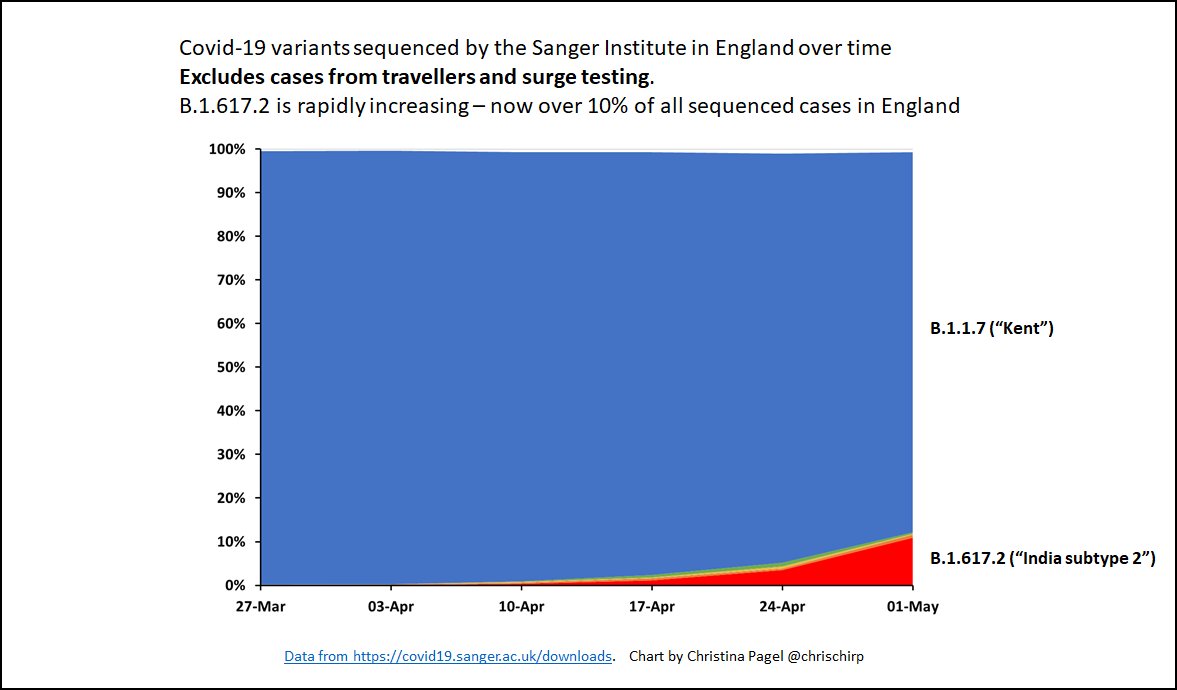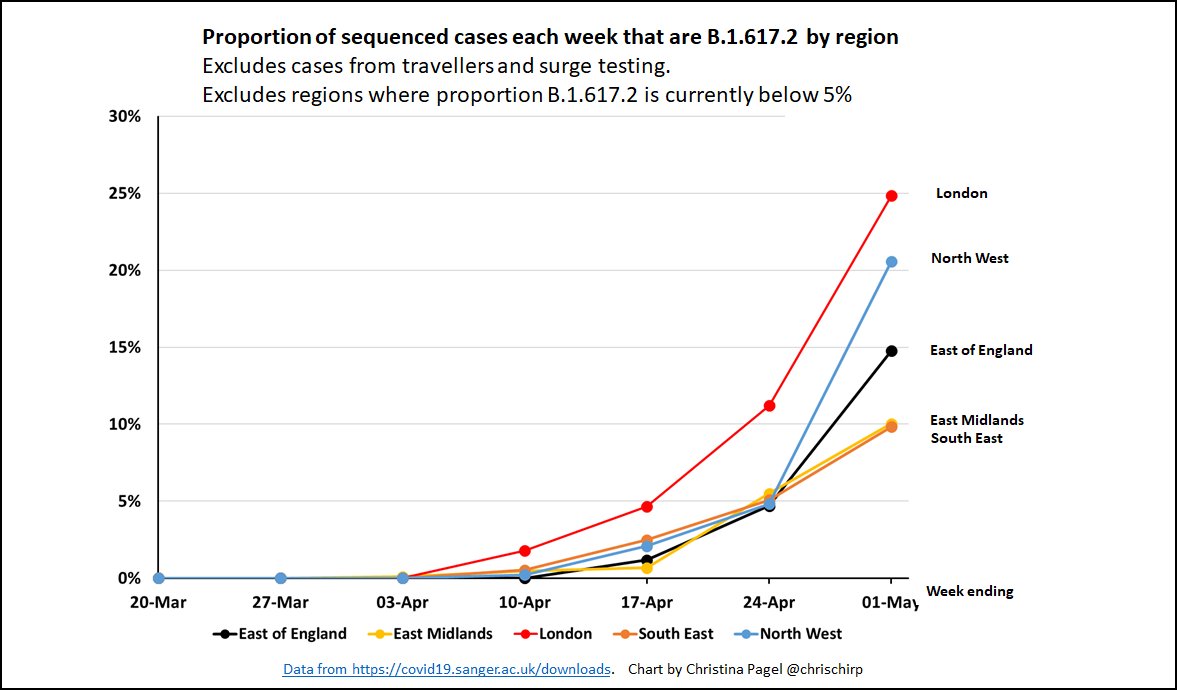
1. THREAD on vaccines, "Indian" variant, Bolton and the summer.
Bolton currently has 18 patients in hospital with Covid, 12 no jab, 5 one jab, 1 both jabs (who was frail).
What are the implications?
bbc.co.uk/news/uk-571341…
11 tweets.
Bolton currently has 18 patients in hospital with Covid, 12 no jab, 5 one jab, 1 both jabs (who was frail).
What are the implications?
bbc.co.uk/news/uk-571341…
11 tweets.

2. Hancock apparently said the "vast majority" of unvaccinated patients were eligible. I don't know what "vast majority" of 12 is, but let's say it's 11.
About 95% of over 50s have had 1 dose and about 90% of over 70s have had 2 doses in England.
About 95% of over 50s have had 1 dose and about 90% of over 70s have had 2 doses in England.
3. Eligible is over 40s and health care workers - so can't say too much *precise* about vax efficacy without knowing more (inc exposure).
We also don't know which variant but >70% of cases in Bolton from recent Sanger data were new variant (B.1.617.2).
so what can we say?
We also don't know which variant but >70% of cases in Bolton from recent Sanger data were new variant (B.1.617.2).
so what can we say?
4. Firstly, very likely that vaccination *does* protect well against severe illness (if it didn't, you'd expect hospital vax-eligible patients to be more vaxxed than not, because there are many more eligible people who are vaxxed than not).
Also clear that 2 doses better than 1.
Also clear that 2 doses better than 1.
5. BUT, it's not perfect.
A small percentage of vaxxed people end up in hospital after 1 or 2 doses - particularly if already frail.
Key thing about the SAGE models is that if you have a LOT of infection in population, this smaller percentage can still overwhelm hospitals.
A small percentage of vaxxed people end up in hospital after 1 or 2 doses - particularly if already frail.
Key thing about the SAGE models is that if you have a LOT of infection in population, this smaller percentage can still overwhelm hospitals.
6. A small percentage of a very big number is big.
Doesn't mean the vaccines don't work (they do), but it's not enough if you have enough spread (and we don't have enough fully vaccinated people yet to prevent that).
Doesn't mean the vaccines don't work (they do), but it's not enough if you have enough spread (and we don't have enough fully vaccinated people yet to prevent that).
7. The added complication of this variant is that it might transmit better through vaccinated people (even if it doesn't make them sick) - making it even harder to keep infections down.
itv.com/news/2021-05-1…
itv.com/news/2021-05-1…
8. There is also the 1 (??) person in Bolton hospital who wasn't eligible for a vaccine - presumably someone under 40.
If infections do run rampant, many younger unvaxxed people could end up in hospital.
Again - a small percentage of a very large number is still big.
If infections do run rampant, many younger unvaxxed people could end up in hospital.
Again - a small percentage of a very large number is still big.
9. The other thing is inequality in vax coverage. Vaccine uptake is lower in more deprived areas.
Deprived areas are also more *exposed* to infection from work & housing and to severe illness once infected cos more likely to have other health problems.
blogs.bmj.com/bmj/2021/04/09…
Deprived areas are also more *exposed* to infection from work & housing and to severe illness once infected cos more likely to have other health problems.
blogs.bmj.com/bmj/2021/04/09…

10. So this combo of lower vax rates, higher exposure *to* infection and higher chance of getting ill once exposed also likely leads to seeing more unvaxxed people in hospital than you might without these disparities.
11. So yes, take the breakdown of patients by vax status in Bolton hospital as a sign that vaccines are protective against severe illness.
But do not think that this makes everything "fine" cos it doesn't. /END
But do not think that this makes everything "fine" cos it doesn't. /END
PS to the heartless argument that unvaxxed people are to blame if they don't get vaxxed... 1) full hospitals are full hospitals 2) SAGE models suggest most deaths are in vaxxed people in a bad surge 3) dividing people in "deserving" and "undeserving" is wrong and dangerous.
PPS as @KateCushing2 reminded me - having loads of infections in younger, unvaccinated, people also means a lot of long covid which is a terrible thing.
• • •
Missing some Tweet in this thread? You can try to
force a refresh












